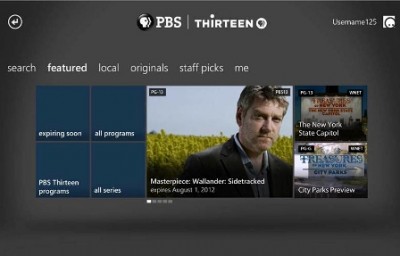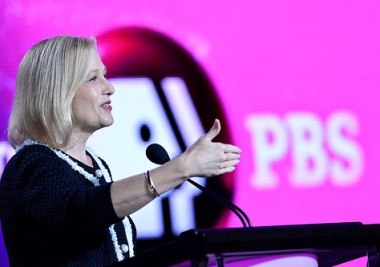Tag: PBS
With Digital Studios, PBS tailors programs for a web-only audience
In a bid to attract younger viewers who don't tune in to broadcast TV, PBS Digital Studios has cultivated a slate of ...Independent Lens, WNYC and NPR among pubmedia’s 2012 Peabody winners
Judges in the 72nd annual Peabody competition selected winners as “the best in electronic media for the year 2012,” including PBS programs ...POV announces 26th season lineup, plans a move to Mondays
After a season of bad press following PBS’s much-maligned 2012 decision to move its flagship independent documentary program POV from Tuesday nights to Thursdays, ...POV’s American Promise wins special jury award for U.S. docs
The 90-minute feature was produced and directed by Joe Brewster and Michèle Stephenson, a married couple who traced the education of two ...PBS pushes message of digital innovation at SXSW
During a March 10 appearance at the South by Southwest Interactive conference, PBS President Paula Kerger talked the talk of digital innovation, ...More than airtime: Documentary producers search for new frontiers of engaging audiences
During a conference at the U.S. Institute of Peace Feb. 28, the makers of human rights documentaries discussed the techniques and challenges ...Portrait of a ‘Kind Hearted Woman’ as she finds her voice
Kind-Hearted Woman, David Sutherland's latest documentary series for Frontline is a five-hour story of abuse and triumph for a Native American woman. His meticulous techniques ...Nielsen will expand its definition of TV ratings by start of fall 2013 season
The Nielsen Co., the stalwart television-ratings tracker, announced Feb. 20 that it plans to track viewing on additional devices beginning in September. ...Oscar-nominated POV filmmaker detained at airport
Palestinian documentary filmmaker Emad Burnat, whose Oscar-nominated film 5 Broken Cameras received funding from PBS’s POV, was detained Feb. 20 at Los Angeles International Airport after arriving in the ...Judge denies New York City’s request for outtakes from Ken Burns’s Central Park Five
More than five months after subpoenaing notes and outtakes from The Central Park Five, a crime documentary about the 1989 arrest and conviction of five ...Downton Abbey season finale nets 8.2 million viewers
The third-season finale of Downton Abbey drew 8.2 million viewers for its Feb. 17 PBS broadcast, the network and WGBH announced Feb. 19. The numbers come ...A growing push for data-driven documentary filmmaking
Wendy Levy, the director of arts consultancy group New Arts AXIS, called for documentary filmmakers to embrace big data tools as a ...Amazon will become exclusive paid streaming home for Downton Abbey
Amazon announced today it has struck a deal with PBS to make its online video streaming service, Prime Instant Video, the exclusive ...Roku, Xbox pick up pubTV shows
PBS is jumping into the “over-the-top” video-streaming space with a pair of deals to distribute public TV programs through apps on Roku ...Is it fall for Downton Abbey? Scheduling is “complicated,” Kerger says
PBS is weighing whether to schedule the debut of the next season of Downton Abbey for the fall, when it is set to air ...







